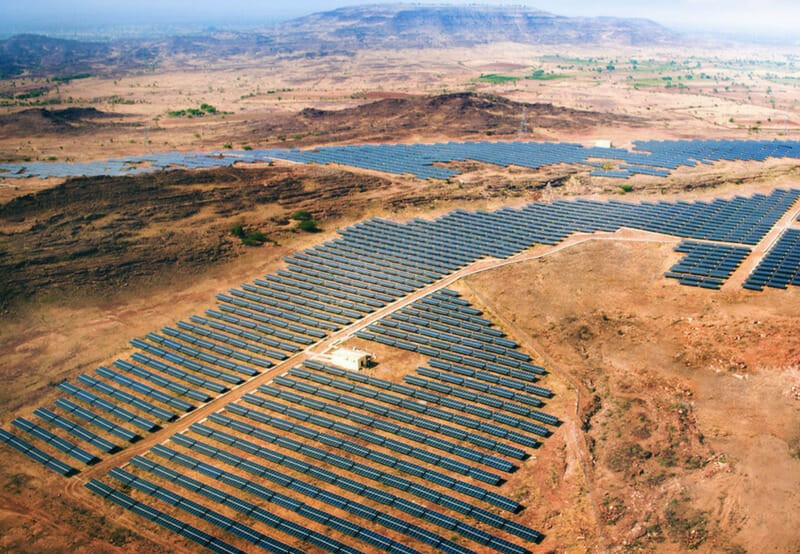Mozambique diversifies its electricity mix with 3 new 120 MWp photovoltaic power plants
Aderemi Ojekunle is a Businessamlive Reporter.
you can contact hin on aderemi.ojekunle@businessamlive.com with stories and commentary.
October 7, 20201.5K views0 comments
Ben Eguzozie, with wire report
- As global grid-connected solar capacity hit 580.1 GW plus 3.4 GW off-grid PV
- Lesson for Nigeria with huge power need, to embrace PV system
As countries across Africa are committing to lower carbon emission targets and cleaner energy solutions, Mozambique, a resource-rich south-eastern African country is diversifying its electricity mix with three new 120 megawatt-peak (MWp) photovoltaic solar power plants, reports obtained from Afrik 21 has said. The move shows the country is also joining many climate-conscious nations that are embracing eco-friendly energy production.
The Mozambican government has just launched a call for tenders for the development of three solar photovoltaic projects in three provinces of the country. The plants would enable independent power producers (IPPs) to add 120 MWp to Mozambique’s national grid.
According to a tender notice issued by the Mozambican ministry of mineral resources and energy (Mireme), the development of the new projects aims to diversify the electricity mix and accelerate the country’s electrification process by adding 120 MWp to Mozambique’s national electricity grid.
Checks by Business A.M. indicate that a photovoltaic power station, also known as a solar park or solar farm, is a large-scale photovoltaic system (PV system) designed for the supply of merchant power into the electricity grid. They are differentiated from most building-mounted and other decentralised solar power applications because they supply power at the utility level, rather than to a local user or users. The generic expression utility-scale solar is sometimes used to describe this type of project. The solar power source is via photovoltaic modules that convert light directly to electricity. To date, for a variety of reasons, photovoltaic technology has seen much wider use in the field. As of 2019, concentrator systems represented about 3 percent of utility-scale solar power capacity.
Global grid-connected solar capacity reached 580.1 GW at the end of 2019, along with 3.4 GW of off grid PV, according to the International Renewable Energy Agency. Across the world, solar power generation is trending, encouraged by environmentalists and climate change proponents who claim that solar power doesn’t release any greenhouse gasses; and except for needing a source of clean water to function, it uses absolutely no other resources. Hence, it’s safe and environmentally-friendly.
The Mozambican capacity will be obtained from three new photovoltaic solar power plants to be built by IPPs. Each with a capacity of 40 megawatts-peak, the plants will be built in Dondo, Lichinga and Manje, in the provinces of Sofala, Niassa and Tete, respectively. The development of the new production capacity (120 MWp) is part of the Renewable Energy Auction Promotion Programme (Proler), implemented by the public company Electricidade de Moçambique (EDM) in partnership with the French Development Agency (AFD) and the European Union.
“The structuring of renewable energy auctions, with a financial contribution of 37 million euros from the European Union in partnership with AFD, aims to diversify quality and low-cost energy sources, ensuring a greater contribution of renewable energies in the country’s energy transition and electrification. A financing agreement in the framework of Proler will be signed between the government and development partners,” Mireme said.
Through Proler, the public power company EDM will strengthen its experience in the development of public-private partnerships (PPPs) for the production of solar energy. This form of financing and development of clean energy projects by private partners has led to the construction of the Mocuba photovoltaic solar power plant in the province of Zambézia, in eastern Mozambique. With a capacity of 40 MWp, the plant is owned by a consortium formed by the Norwegian IPP Scatec Solar, Electricidade de Mozambique (EDM) and KLP Norfund Investments, a financial institution owned by the Oslo-based insurance company Kommunal Landspensjonskasse (KLP) and the Norwegian government’s private equity company Norfund.
Nigeria, Africa’s most populous country, with huge energy needs, despite having potential to generate 12,522 MW, is perhaps required to get into the renewable energy revolution to solve its power shortages, which have forced over 60 million citizens into owning generators to provide electricity for their homes and businesses.

